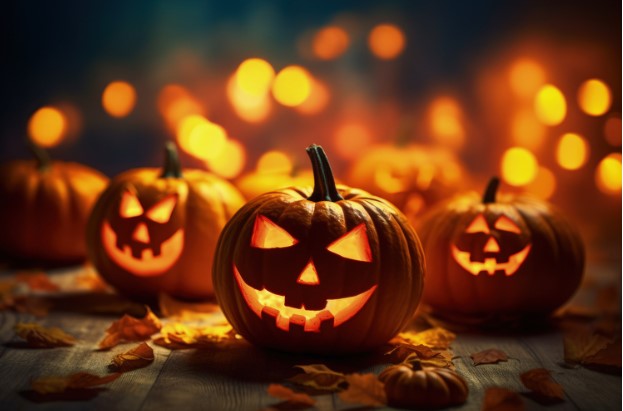A Basic Overview of Halloween’s History
Today, Halloween is widely celebrated, a highly commercial holiday. For weeks, and sometimes even months leading up to October 31s, stores push out their Halloween themed merchandise from decorations, to costumes, to candies and so much more. Families and friends gather for parties, and children go door to door asking for candy. Movies and TV specials air, creating a time of spooky fun. Halloween now rakes in billions of dollars each year, but what began Halloween?
Vivianne Kust, a sophomore at Hingham High offered, “All I really know about Halloween’s history is that part of it dates back to the Salem Witch trials in the 1600’s, and now Salem is viewed as haunted.” Although Salem, and its infamous witch trials contribute to Halloween’s spooky reputation, Halloween’s origins go back even further into the Iron Age, thousands of years ago. Halloween originated from the ancient Celtic festival of Samhain, a pagan holiday marking the end of the harvest and the transition from summer to winter. Celebrations on October 31 and into the 1st of November involved feasts and sacrifices of livestock and crops to Celtic deities. Supposedly, during this time, the boundaries between the world of the living and the world of the dead weakened, allowing for many spooky and eerie occurrences.
A Deeper Dive into Two Halloween Traditions
One prominent Halloween tradition is the carving of pumpkins. This tradition originated in Ireland, where originally, instead of pumpkins, people would carve turnips with the intent of warding off evil spirits. This ties into the myth of the Jack O’ Lantern, rooted in the tale of a man called Stingy Jack. To set the scene, Jack, a man known for his lousiness, and lack of empathy and morals. Satan hears of Jack’s ways and takes a keen interest in him.
One night Jack is drunkenly stumbling home from a local pub when up ahead an odd shape appears in the road. Upon closer inspection he discovers it is the Devil disguised as a corpse. Satan tells Jack of his plans to take him to hell, and when Jack finally realizes his fate, he asks Satan to go back to the bar for one last drink, and he agrees. Upon revealing he has no money to pay, Jack convinces Satan to shapeshift into a coin to pay with. Upon doing this Jack quickly picks up the coin and slides it into his pocket, with not so coincidentally housed Jack’s silver cross, making it impossible for Satan to return to his original form. The two agree that Jack will let him go if Satan promises Jack ten more years until his collection.
Ten years go by, and Jack and Satan meet again, this time before Satan takes Jack to hell, Jack has another final request. He asked Satan to please climb a nearby tree to get him an apple. To avoid Jack’s endless nagging of his hunger, he agrees. The second Satan ascends the trees gripping limbs Jack begins to carve. He carves tens of crosses into the tree’s bark, blocking Satan from coming down.
They again make another deal. Jack will let Satan go, only if he agrees to never come to collect Jack’s soul. Fed up with Jack’s tricks Satan agrees, glad to never have to deal with him again. Years go by, and Jack finally passes away. The legend has it that when his soul reached heaven’s gates, God refused him entry, because of the terrible life he led. So, he descended into hell, but there he was once again turned away, this time because of the deal he had made. The devil was never to collect Jack’s soul. So, with his tricks turned against Jack, with no place to go, began his eternity of searching in Purgatory, the “land between lands.” All he carried with him was an ember, gifted from the pits of hell by Satan, and a hollowed-out turnip. From this he received a new name, Jack O’ The Lantern.
“I have been carving pumpkins every year for as long as I can remember and this was the first time I had ever heard this story.” said Veronica Webb, a sophomore at Hingham High.
Every year, children, and adults alike, all over the world dress up in costumes for Halloween. Often movie characters, or animals. But why is this? On the first night of winter, marked by the holiday of Samhain, it was believed by the Celtics that a door was opened to the world of the dead, allowing ghosts, and a variety of other extraterrestrials to cross into the human world. To disguise themselves, people began to wear costumes and masks to hide their human identities from the spirits, to go unrecognized, and unbothered.
Above was a very brief overview of the history of this Autumn Holiday. This Halloween season I urge you to explore deeper. Halloween has such a rich and dense history, consisting of hundreds of stories and myths that make it so much more than an excuse to eat an insane amount of candy. It is easy to overlook the traditions that shaped this, and all other modern holidays, so as you celebrate Halloween this year, take a moment to uncover some of this history. There is so much more to Halloween than what meets the eye.
































